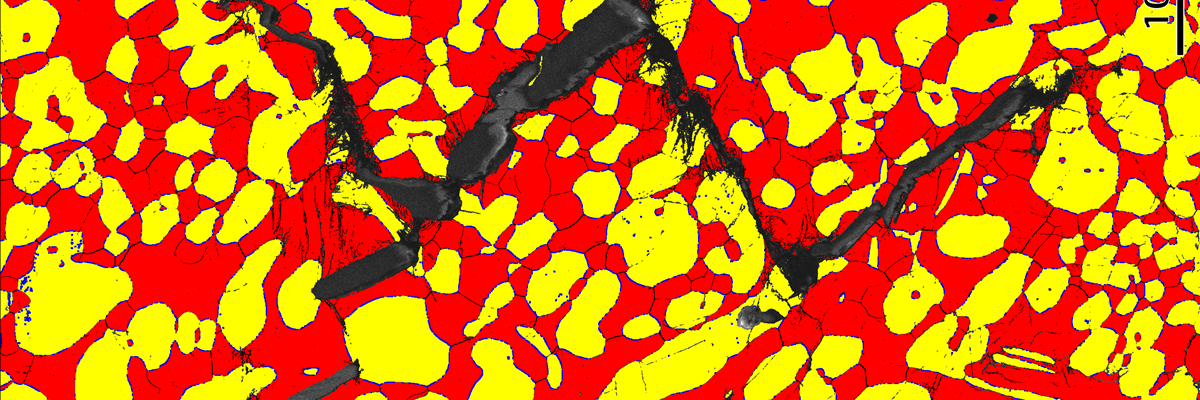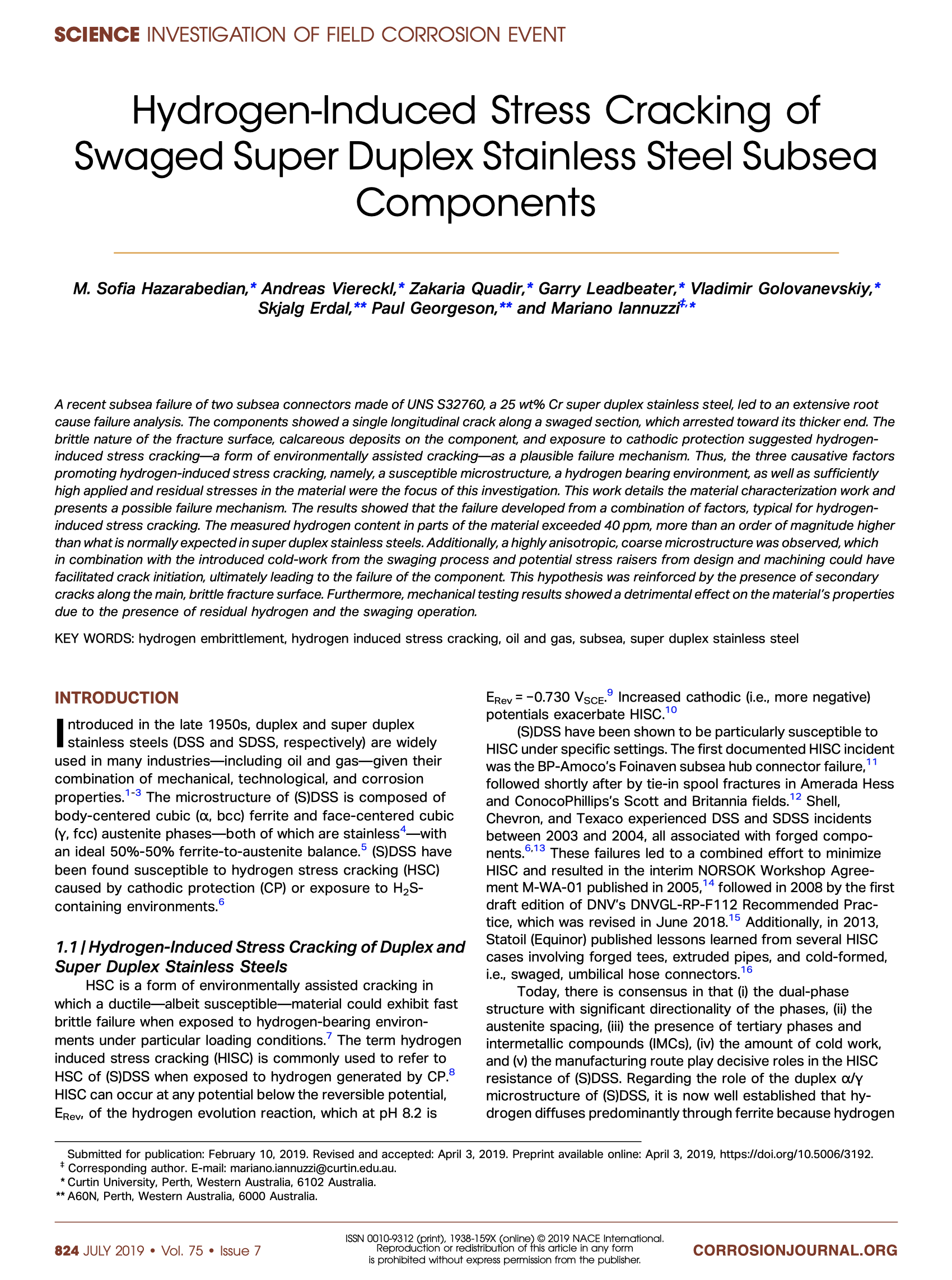Hydrogen-Induced Stress Cracking of Swaged Super Duplex Stainless Steel Subsea Components

Overview
This work focuses on two connectors used in subsea production equipment, both showing a single longitudinal crack in a swaged section. The components were manufactured from UNS S32760, a 25 wt% Cr SDSS with a specified minimum yield strength (SMYS) of 550 MPa (80 ksi). The external surface of the connectors was exposed to a restricted flow of seawater and the components were in both electrical and electrolytic contact with a larger carbon steel subsea structure. The parts were subjected to CP, and substantial accumulations of calcareous deposits were found upon initial inspection.
The cracking extended along the swaged part of the component and the visual appearance suggested cleavage fracture and, hence, the possibility of a Hydrogen induced stress cracking (HISC) failure. A comprehensive materials characterization that included positive material identification, fractography, microstructure analysis, microhardness mapping, total hydrogen concentration, as well as pitting corrosion and tensile testing was undertaken to address the three contributing factors of an environmentally assisted failure, namely, (i) the material and manufacturing routes, (ii) the presence of hydrogen, and (iii) the possibility of stress raiser and design considerations. The main findings of the analysis are presented herein.
Why is it important?
HISC is the Achilles' heel of duplex and super duplex stainless steels. In this investigation, we demonstrate the detrimental effects of both cold work (swaging) and anisotropic microstructures on HISC resistance. We believe the findings challenge the validity of the present form of DNV-GL RP F112 as a method to reduce HISC risks.
Get the article
 Hydrogen-Induced Stress Cracking of Swaged Super Duplex Stainless Steel Subsea Components, CORROSION. 2019;75(7):824-838.
Hydrogen-Induced Stress Cracking of Swaged Super Duplex Stainless Steel Subsea Components, CORROSION. 2019;75(7):824-838.
Abstract
A recent subsea failure of two subsea connectors made of UNS S32760, a 25 wt% Cr super duplex stainless steel, led to an extensive root cause failure analysis. The components showed a single longitudinal crack along a swaged section, which arrested toward its thicker end. The brittle nature of the fracture surface, calcareous deposits on the component, and exposure to cathodic protection suggested hydrogen-induced stress cracking—a form of environmentally assisted cracking—as a plausible failure mechanism. Thus, the three causative factors promoting hydrogen-induced stress cracking, namely, a susceptible microstructure, a hydrogen bearing environment, as well as sufficiently high applied and residual stresses in the material were the focus of this investigation. This work details the material characterization work and presents a possible failure mechanism. The results showed that the failure developed from a combination of factors, typical for hydrogen-induced stress cracking. The measured hydrogen content in parts of the material exceeded 40 ppm, more than an order of magnitude higher than what is normally expected in super duplex stainless steels. Additionally, a highly anisotropic, coarse microstructure was observed, which in combination with the introduced cold-work from the swaging process and potential stress raisers from design and machining could have facilitated crack initiation, ultimately leading to the failure of the component. This hypothesis was reinforced by the presence of secondary cracks along the main, brittle fracture surface. Furthermore, mechanical testing results showed a detrimental effect on the material’s properties due to the presence of residual hydrogen and the swaging operation.
Citation
M. Sofia Hazarabedian, Andreas Viereckl, Zakaria Quadir, Garry Leadbeater, Vladimir Golovanevskiy, Skjalg Erdal, Paul Georgeson, Mariano Iannuzzi, Hydrogen-Induced Stress Cracking of Swaged Super Duplex Stainless Steel Subsea Components, CORROSION. 2019;75(7):824-838. https://doi.org/10.5006/3192.
Copyright etc.
The article has been published as OpenAccess, distributed under the terms of the Creative Commons Attribution License, which permits unrestricted use, distribution, and reproduction in any medium, provided the original author and source are credited.

